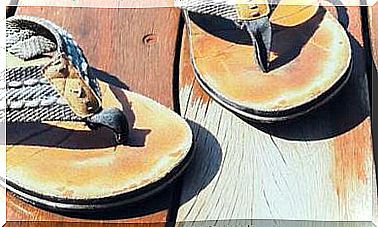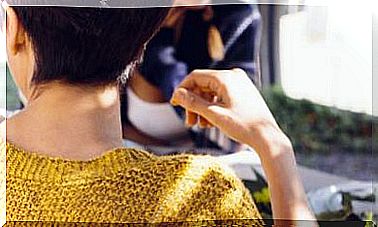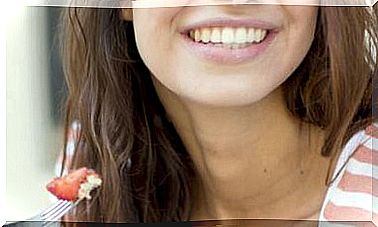Naturalized Pools: The Healthiest And Most Sustainable Dip
To enjoy a healthier and more ecological bath, the best alternative is naturalized pools, a living system without chlorine, with only stones, vegetation and water clean.

Nature does not understand maintenance, or harmful chemicals, as a synonym for good operation. The natural is alive, has unexpected forms and is diverse. There is the key. The lakes and pools have been from time immemorial the best option for the playful and refreshing bath in the summer season. And nobody wondered if the reed on the bank or the stones on the shore and the bottom bothered, because they had simply always been there, and thanks to them the water maintained its healthy balance
If conventional swimming pools use the brute force of chemicals to fight dirt, eliminating all forms of life, naturalized swimming pools subtly take advantage of the advantages that understanding the mechanisms of natural balance can give us . It is possible to reduce the concentration of pathogens to safe limits, but facilitating coexistence with other beneficial microorganisms.
Naturalized pools use nature’s solutions
In a naturalized pool, the aim is to imitate the cycles of nature in a controlled way through phytodepuration and also avoiding physical treatments with ultraviolet (UV) rays, ions or active oxygen. The method bases its effectiveness on achieving a successful combination of plant and mineral species that will make it possible to maintain an artificial pond in the most natural way.
Designing a naturalized pool goes far beyond mere gardening. Designing an ecosystem is a complex task that requires the intervention of biologists who control food webs, organic matter balances or areas for oxidation and reduction.
For everything to work, any plant species is not appropriate. Even so, there are a multitude of suitable plants, some of them with an insurmountable poetics, such as water lilies; others are even edible, such as jujube or watercress, and there are also invasive ones, such as reeds, which depending on their use are not highly recommended. Biology, landscaping and engineering go hand in hand to offer a safe bathroom with a unique aesthetic.
There are more than 20,000 naturalized pools in Europe
Since 1980, when the first modern experiment with an artificial bathing pond was carried out in Austria , more than 20,000 naturalized swimming pools have been built in Europe, and the interest is growing.
For many it may seem like a naturalistic extravagance, but the reality is that throughout all of history the really anomalous thing has been the synthetic purification of bathing water.
If we look at the origin of the word pool, we see how it looks suspiciously like the Latin word pisces (“fish”). And it is that, indeed, since the Romans the decomposition of water was avoided by including fish in the rafts so that harmful insects and larvae were eaten.
Clean and chlorine free!
This chemical element is present in nature combined with other substances, such as in sea salt. However, when present in artificial formulations, the molecules tend to be complex pollutants that are very dangerous both for the environment and for human health.
It is an aggressive irritant of the nose, throat and respiratory tract that, especially in children, can cause severe damage. Especially in indoor swimming pools, due to the lack of ventilation, in just over an hour the exposure limits are exceeded for a whole day, as reported by a study by the German Federal Environmental Agency.
The risk is not only when breathing, substances that remain impregnated in the hair and skin after spending an hour swimming are also potential carcinogens. In addition, some studies indicate that substances such as trihalomethanes, the result of chlorine cleaning, can cause bladder cancer.
Pools with plants and rocks
Integrating vegetables and rocks into the pool is a spectacular design opportunity to explore new formal concepts. As unevenness is required for the oxygenation of the water, it is experimented with waterfalls and waterfalls that turn the bathroom into a first-class aesthetic experience.
But it is also possible to have a phytodepurated pool with a conventional look, without giving up the straight lines and the treatises of minimalism. However, do not be misled, and although at first glance they may look alike, there are considerable differences to take into account.
When life opens up space, it does not understand imposed voids or impeccable transparency, so the appearance of moss on the coatings or a certain greenish color in the water will not be a problem of dirt, but a sign of good health.
A swimming pool can be converted into a natural one
If we have a conventional pool, we can prefer to proceed with its rehabilitation and naturalization, without having to build a completely new one. How do you do it? How much would it cost?
According to Jordi Serramia, from the specialized company Urbanarbolismo, it does not pose any technical inconvenience beyond the need to have an additional space for the installation of the biological purification area. This, according to sources from the firm ARAGrup, represents 15% of the surface of the total water surface, and can occupy an adjacent area or part of the original glass. In terms of cost, the investment for a pool of about 25 m2 would not reach € 10,000.
Each naturalized pool is unique
Designing a biological purification system depends on so many aspects that it is almost impossible to have standard swimming pool models as is the case with conventional ones.
In the case of naturalized ones, both the composition of the water and the influx of the public as well as the materials used for their construction will be the main determining factors of the project both formally and biologically.
The biologist Carles Pérez, director of Projectes d’Aigua and president of the association Grupo Iberico de Aguas de Baño Naturalizadas, gives us the keys to enjoying an efficient pool. “Regarding maintenance, it will be peculiar during the first three years, a period during which the ecosystem regulates itself and requires the monitoring of a professional who controls the parameters and corrects possible imbalances. From then on, all you need is pruning and cleaning. thoroughly annually, and, during the bathing season, cleaning leaves and insects, as occurs in conventional plants, and vacuuming the sediments from the soil “, which does not represent a major effort.
Keys to a natural pool
- Quality water. A naturalized pool is not disinfected, nor does it need it. After one year of operation, the activity of the biofilters makes the water quality comparable to that of a high mountain river.
- Phytodepuration. Plant-based water purification used in naturalized swimming pools is a very widespread system in the industrial and urban wastewater treatment sector, either as a complement to or as the main method of treatment plants (WWTP), which gives an idea of its effectiveness.
- Vegetable species. Almost any semi-aquatic plant typical of the geographical area can be effective in generating a biofiltration. It is highly recommended to use at least twenty different species to make the ecosystem more resistant. The most common are water lilies, lotuses, jujubes, mint, water spinach, papyrus, watercress, lilies and reeds.
- Materials. Only inert materials such as calcium carbonate or latex and polyethylene films are recommended. In addition, for the settlement of microorganisms it is convenient to include a mineral substrate such as arlite.
- Cost. Depending on the complexity, it can range from doubling the cost of a conventional pool to being 30% cheaper. What it will always be, it is cheaper to use, since it does not require chemicals or electricity, nor is it necessary to renew the water beyond replacing the one that evaporates.









